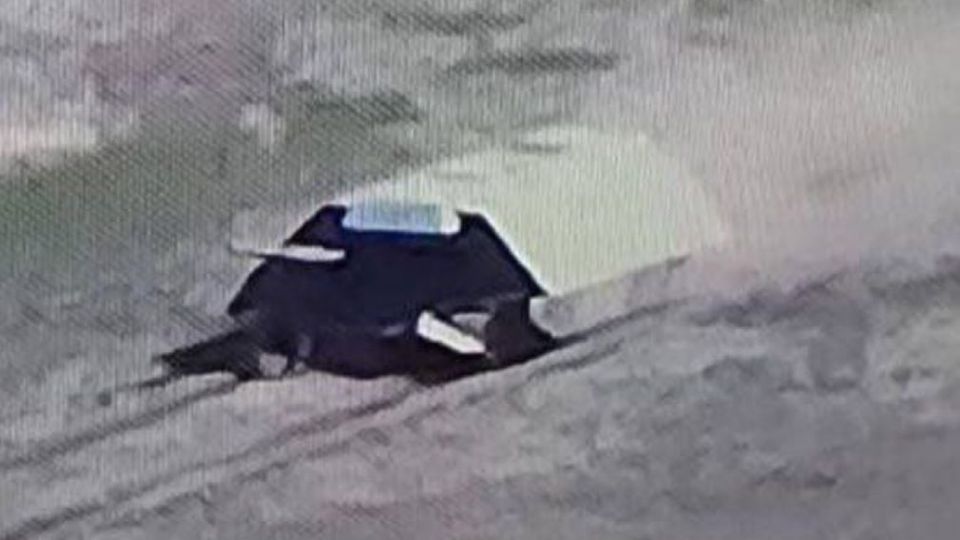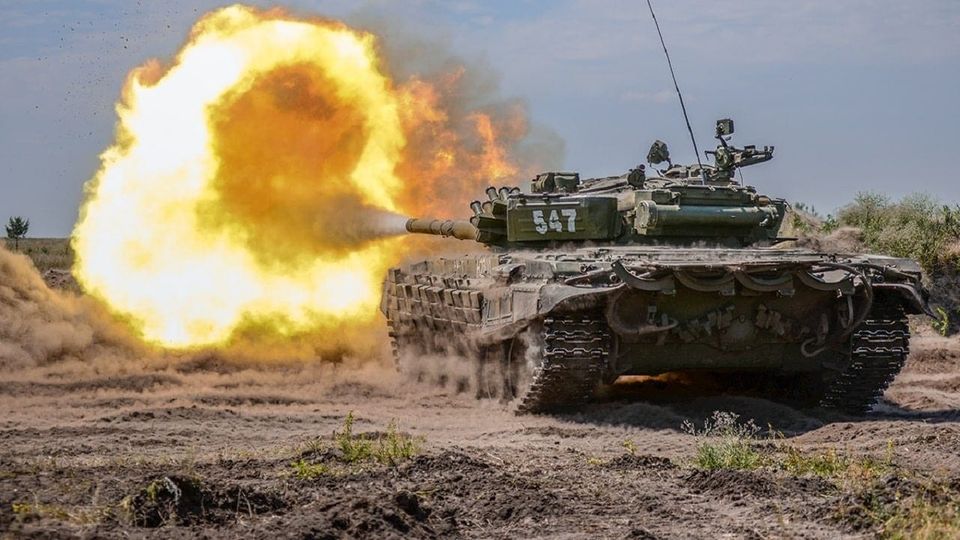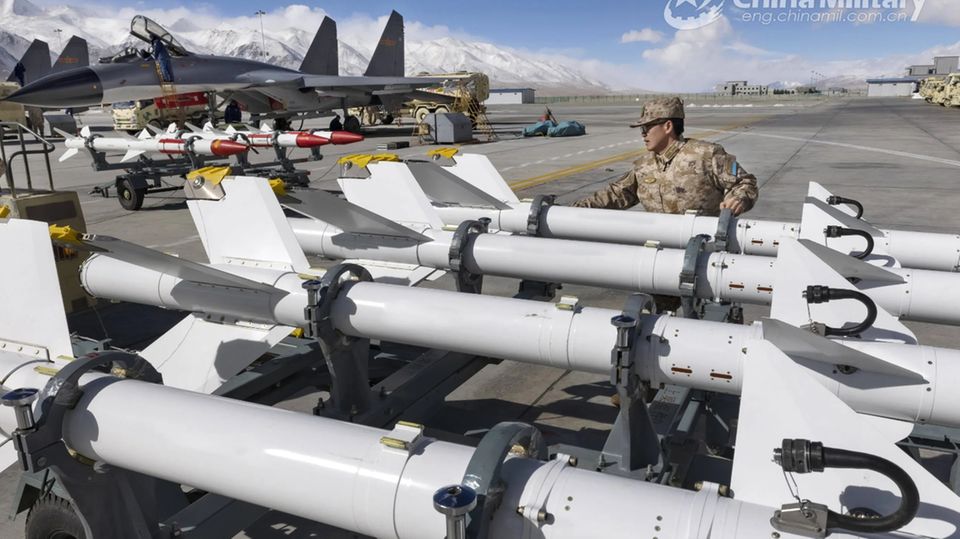Russia is slowly but steadily advancing in Donbass – with losses and with the help of improvised vehicles. There is often talk of “flesh attacks”. Why are the invaders still successful?
At the Battle of Bakhmut there was still talk of Russian “flesh waves”. The term alludes to the beginning of the Second World War, when the Soviets sometimes still attacked with a tactic that had already been outdated in the First World War: the closed infantry assault. In dense rows, three in a row, sometimes linked under each other, the Red Army soldiers were supposed to reach the German trenches and achieve victory in close combat with the bayonet. All this without any significant artillery support and without the help of armored vehicles. The Germans were shocked by the courage of the Soviets – whose attacks were, of course, without any success. Just like the desperate Japanese banzai attacks in the Pacific.
In short: There are no such wave attacks in Ukraine.
Attacks under drone surveillance
Any ground fighting in Ukraine must contend with a problem not present in previous wars: the ubiquity of drones. From models that monitor the front area and those that attack the enemy as soon as they are detected. The Ukrainian armed forces faced this at the beginning of their summer offensive and suffered heavy losses as they approached.
They subsequently switched from attacking an armored column to a different concept: small groups of infantrymen tried to work their way along the rows of trees unnoticed. However, this tactic only works over limited distances; the soldiers cannot sneak for miles with their equipment. This exhausts the men and increases the chance of being discovered. Six months later, even more so as both sides now use drones with night vision capabilities.
As fast as possible
Moving across terrain without the protection of trenches and buildings is deadly. The Russian answer to the dilemma is the stormtrooper taxi. That what? The infantry alone is shouldering the brunt of the fighting, but the Russians are trying to get their soldiers out of deployment and into the attack zone as quickly as possible. To do this, they use anything that moves quickly off-road and on dirt roads. Mostly battle tanks and armored personnel carriers, but sometimes also motorcycles or buggies.
In the West, people like to show failed attacks or strange conversions of tanks – like the Frankenstein tank. A T-72 with a kind of helmet superstructure welded onto it and which moves like a turtle. All ridicule should not obscure the fact that the Russians know what they are doing and are successful with their strategy. During the initial attack on Chassiv Yar and a few days later in Krasnohorivka, the model of Russian assault attacks was particularly easy to study.

The screenshot shows a T-72 with a turtle shell
© Telegram
Tanks as drone decoys
The Russians approach with six vehicles each. The column is led by a main battle tank, the rest consists of armored troop transports and infantry fighting vehicles. The group moves at the highest possible speed along a path that other Russians have already traveled. This is intended to avoid the danger of mines – and this is also how the images of tanks racing past the wrecks from the week are created.
The group only needs a few minutes to bridge the distance to the attack target. When things are going well, the drivers keep their distance so that an artillery shell would only damage one vehicle at a time. After half the route the Ukrainian defense usually kicks in. Wherever possible, the Russians use the privacy of rows of trees or buildings to avoid being taken under fire by anti-tank weapons. Artillery and drones remain. The lead tank – now mostly with protective roofs and cages – has one main task: it is supposed to attract the drones to itself or hinder them with jammers.
Losses are taken into account
And even if the “decoy” is hit at some point, the concept works. The armored personnel carriers approach the target, cover the position with suppressive fire, drop off the infantry and then race back. Vehicles are usually lost on the way there and back, some are destroyed, others are just damaged. But the failure of two to three vehicles from a column of six is taken into account. For the price, the Russians were able to establish themselves in Chassiv Yar and Krasnohorivka. What kind of vehicles are used for transport seems largely irrelevant – even an ancient T-55 would do the job if it was equipped with drone protection cages and reactive armor.
Meanwhile, the price of losses is high. Because with such an attack only partial success is achieved and no battle is won. That means there are more attacks and transports and therefore more losses. The meat attack is nevertheless more successful and gentler than the Ukrainian attacks in the summer offensive, when Kiev’s troops captured Robotyne, Verbowe and Klishchiyivka.
Massive errors lead to “flesh attacks”
A Ukrainian officer, who wished to remain anonymous, agreed Politico: “The Russians are always learning. They don’t give us a second chance. Don’t believe the hype about how the Russians just throw troops into the meat grinder to be slaughtered. Of course they do – that’s how they maximize the effect of their superior numbers. But they also learn and refine.”
When Russian attacks fail, intelligence errors are often the reason; for example, when the group ends up in a previously undetected minefield. Even more often they are fended off by small drones. In zones where Kiev has the preponderance of combat drones, these attacks regularly fail. And it doesn’t speak well for the Russian military if it continues to launch new attacks without eliminating the drone threat. There are more than 30 Russian wrecks on one road in the Kreminna area, and there are over 100 in the entire zone. Here, Kiev’s drones dominate the sky – and make the Russian advances pointless, even suicidal.
In the West, it is usually overlooked or unaccounted for that the “flesh attacks” are countered by a “flesh defense.” The Russian attacks, whether successful on the ground or not, fall under the category of “armed reconnaissance.” The Russians are monitoring the area and trying to discover the positions of the Ukrainian defenders – trenches, dugouts, artillery locations. Once the Ukrainians try to repel the attack, they are exposed and can be shot at by Russian artillery or destroyed by glide bombs. This is also the reason why Kiev mostly occupies the front positions with second or third line troops. Your loss is taken into account.
The heavy ranged weapons decide
In the West there is a distorted perception because abandoned and destroyed Russian tanks are counted all too meticulously, but the losses of the defenders remain “invisible” and uncounted. Currently, the Russian glide bombs are particularly affecting Kiev’s soldiers at the front. They also represent the main difference from Kiev’s summer offensive, because Ukraine did not have such weapons. Even if the Ukrainian defenders repel an attack, these weapons cause them to suffer casualties and their fortifications to be destroyed. If the Russian stormtroopers can gain a foothold in the settlement, the situation looks even worse: They are watching the Ukrainians from close by. As soon as they rain this, the Russians call for long-range fire.
So the burden of the fighting is borne by the infantry, heavy artillery and bombs are decided by them. Especially since the Ukrainian air defense can hardly intervene on some sections of the front. Russian fighter bombers are now flying directly over Chassiv Yar, often unmolested.
Drones are slowing down the Russians
In order to stop the wave of the Russian army, Kiev would need air defense systems, artillery, ammunition, as well as large quantities of small drones. Whether, how and when the West will meet these needs is unclear. The production of observation and FPV drones could be increased quickly in Ukraine, or even better in NATO territory. A NATO official told Foreign Policy that Ukrainian FPV drones were responsible for two-thirds of recent Russian tank losses. No, they will not decide the war. But Putin can only advance if the skies are not dominated by Kiev’s mini-planes.




